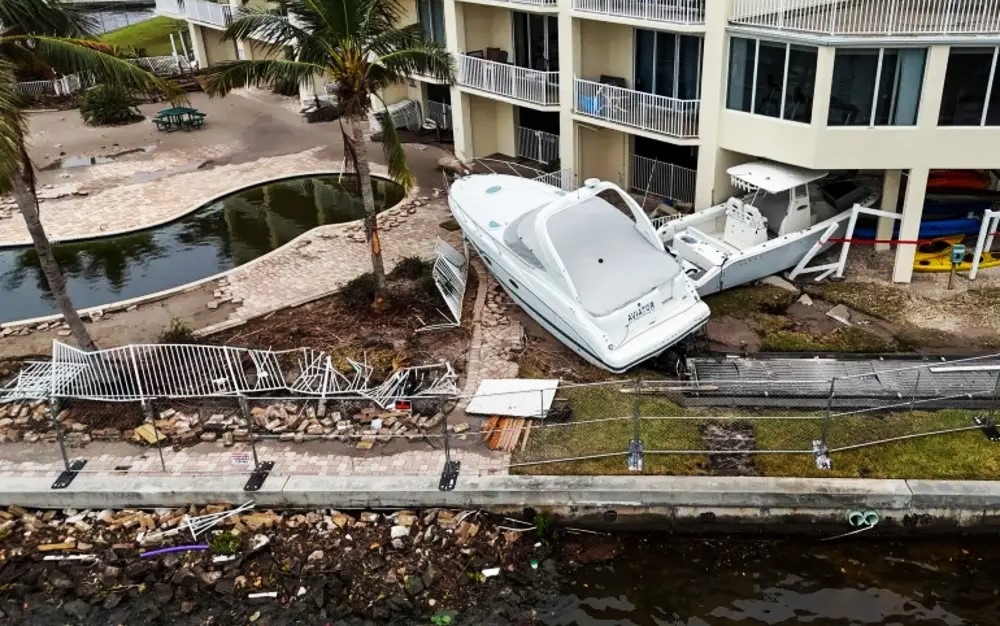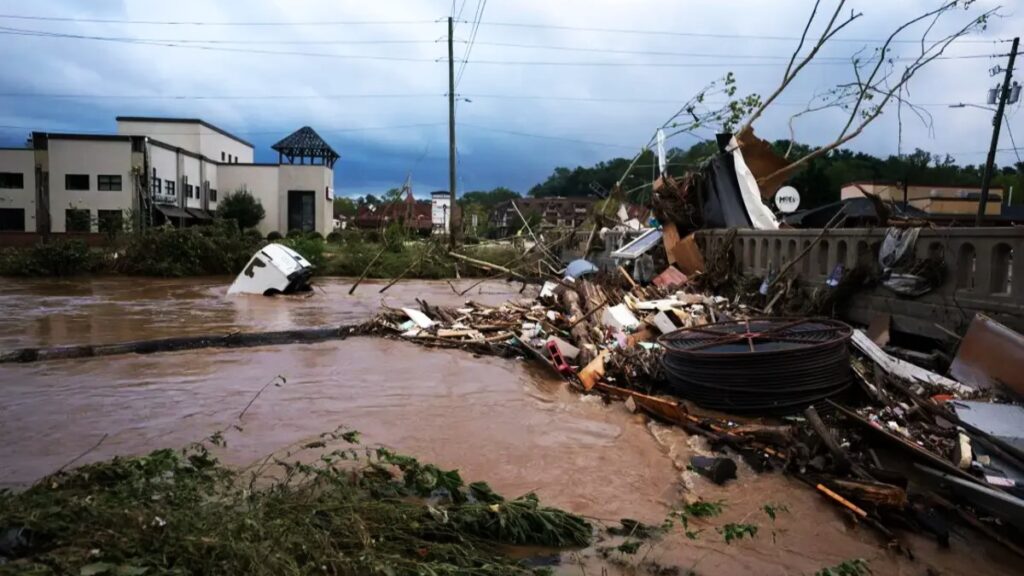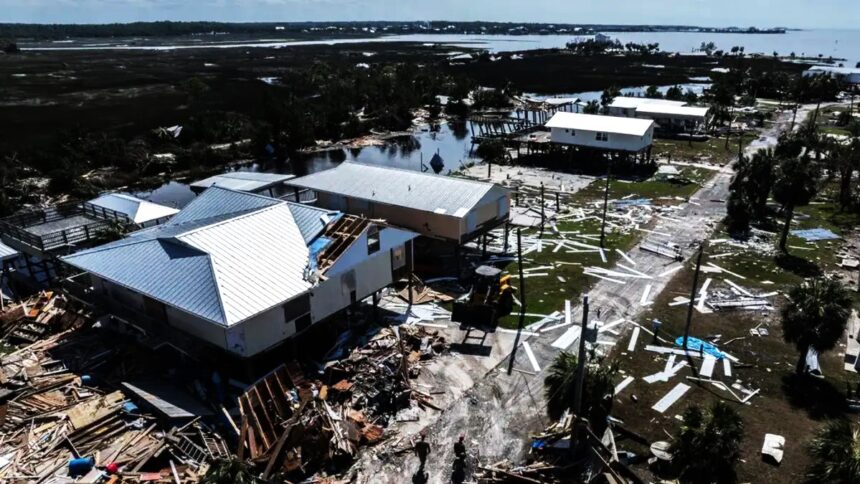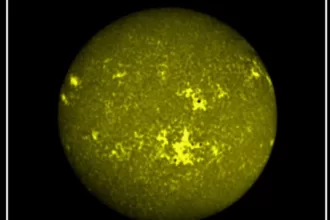Hurricane Helene has wreaked havoc across the Southeast, leaving neighborhoods submerged and communities shattered. Making landfall on Thursday as the strongest hurricane on record to strike Florida’s Big Bend region, Helene has claimed at least 64 lives and caused widespread devastation from Florida to Virginia. In North Carolina, the relentless flooding has transformed roads into rivers and left countless families without basic necessities. Here’s an overview of the situation as it unfolds.
The Rising Toll of Hurricane Helene
The death toll has hit a somber milestone as the storm still affects many states. At least 64 deaths have been confirmed across five states: Virginia, North Carolina, South Carolina, Georgia, and Florida. At least ten deaths have been recorded in North Carolina alone, and 23 deaths have been reported in South Carolina, including the terrible deaths of two firemen who were responding to emergency calls. 17 people have died in Georgia, two of them as a result of a tornado connected to the storm. At least 11 deaths have occurred in Florida, and other drowning accidents have been documented.
Communication Outages and Search Efforts
The storm’s impact has also severely disrupted communication systems, complicating rescue efforts. In Buncombe County, North Carolina, which includes Asheville, over 60 individuals remain unaccounted for as emergency services struggle to coordinate in the face of significant communication outages. County Manager Avril Pinder likened the situation to “Buncombe County’s own Hurricane Katrina,” underscoring the severity of the crisis. High call volumes have overwhelmed emergency services, with over 5,500 911 calls received and more than 130 swift water rescues performed between Thursday and Saturday morning.
Roads and Resources Compromised
In North Carolina, nearly 400 roads and numerous highways remain closed due to flooding, making it difficult for emergency responders to reach those in need. Seven water plants across the state have ceased operations, affecting around 70,000 households. The loss of power to several water facilities has prompted boil water advisories across multiple communities, adding to the growing list of challenges for residents.

Millions Without Power
The aftermath of Hurricane Helene has left approximately 2.5 million customers without electricity across several states, including South Carolina, North Carolina, Georgia, Florida, and Virginia. The ongoing outages have exacerbated the already dire situation, making it harder for families to access food, water, and medical care.
Widespread Damage in Georgia
In Georgia, where the storm has left a visible mark, Governor Brian Kemp described the destruction as reminiscent of a bomb going off. The state has reported numerous fatalities, including the tragic loss of a mother and her one-month-old twin boys, among other victims. Governor Kemp’s stark assessment of the damage paints a chilling picture of the impact: “It looks like a tornado went off.”
South Carolina Faces Historic Damage
The National Weather Service in Greenville-Spartanburg, South Carolina, described the impact of Hurricane Helene as “devastating.” The agency noted this event as potentially the worst in its history, highlighting the horrific flooding and widespread wind damage across the state. Residents have been left to grapple with the aftermath, as communities come to terms with the destruction.
Florida’s Coastline in Ruins
In Florida, the devastation has been severe. Days after Hurricane Helene made landfall, communities along the coastline have been left unrecognizable. Reports indicate complete obliteration of homes, and many residents are now displaced. Power outages affect over 230,000 customers, and boil water notices have been issued in multiple counties. Governor Ron DeSantis emphasized the extensive damage, noting that the storm had impacted areas that had already suffered from previous hurricanes within the last year.
Horrific Flooding yesterday in Black Mountain and Swannanoa, North Carolina.
Human impacts from Helene in WNC will rival Hurricane Katrina based on the hell I’ve seen the last 48 hours.
📍Black Mountain, NC pic.twitter.com/pFK8K5RJdf
— Billy Bowling 𝕏 (@babowling12) September 28, 2024Additional Rainfall and Ongoing Risks
Despite the fact that Hurricane Helene is now a post-tropical storm, more rain is predicted for the southern Appalachians this weekend. There are worries about more floods and excessive runoff because of saturated soil conditions in western North Carolina and eastern Tennessee, where forecasts suggest regions may receive up to two inches of rain.
Understanding Helene’s Impact

Meteorologists attribute the widespread destruction to a combination of Hurricane Helene size, strength, and speed. Measuring approximately 350 miles wide, the storm packed winds of up to 140 mph at landfall. Its rapid movement allowed it to affect regions far beyond its initial landfall point, resulting in significant impacts hundreds of miles away.
Federal Response and Community Resilience
In response to the crisis, President Biden has approved emergency assistance requests from affected states, directing FEMA to assess the situation and coordinate aid. Over 1,270 rescuers have been deployed to assist in recovery efforts, highlighting the federal government’s commitment to helping impacted communities.
As the region grapples with the aftermath of Hurricane Helene, the resilience of affected communities will be tested. The road to recovery will be long, but with ongoing support and efforts, there is hope for rebuilding and healing in the months to come.
Read More: Hurricane Helene Causes Devastating Flooding and Destruction Across the Southeast






